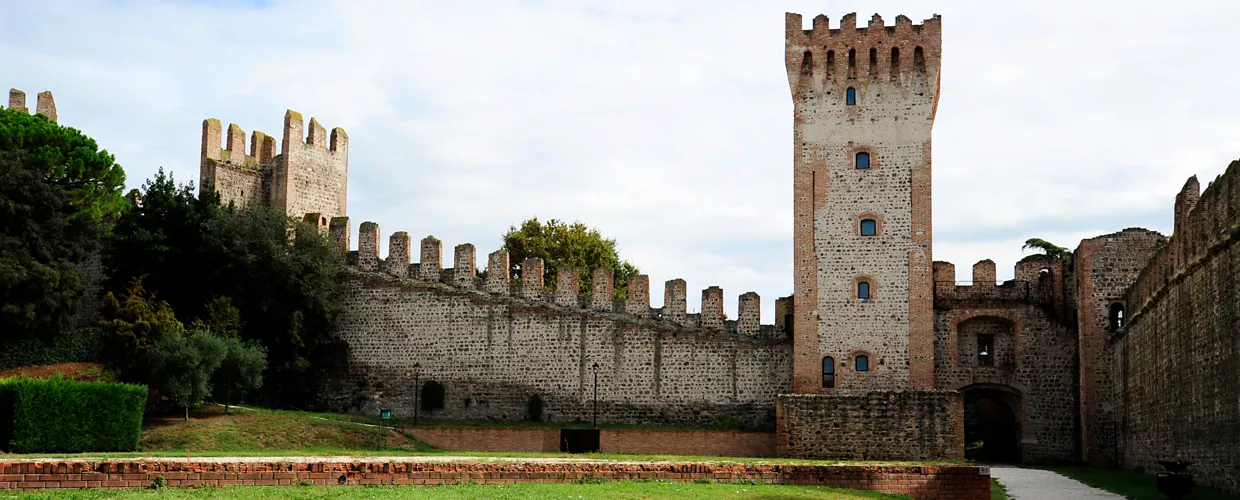This content was automatically translated. View the original text.

Overview
The Carrarese Castle in Este, built to watch over the ancient walled city, is an imposing fortification, adorned with large towers and a long city wall, that testifies to the fundamentally important role played by the territory of Este during the Middle Ages.
On the raised side of the building stands the oldest heart of the castle, in a strategic position overlooking the entire settlement and, to the north-east, what was once the entrance to the fortress, a small castle known as Rocca del Soccorso. The keep, consisting of a circle of walls, houses the remains of a small church and the foundations of a square turret, most likely dating back to the period of the great invasions in the 6th century AD.
This structure was incorporated into a series of residences and defensive walls up until the mid-13th century, when the Marquis d'Este restored the castle to its former use as a defensive fortification.
The castle we see today was built in the 1340s by Ubertino da Carrara, Lord of Padua, on the remains of an earlier fortification destroyed by Ezzelino da Romano's troops in 1249. The first traces of a castrum, dating back to 1115, are connected to the jurisdictional and territorial defence power vested in the d'Este family. Between the 12th and 13th centuries, the d’Este family marquises extended the structure, building several curtain walls and residences.
The castle reached its heyday thanks to Azzo VI, who turned it into a centre of troubadour culture. Artists, poets and jesters were hosted at the court to sing the praises of the marquis and his beautiful daughter Beatrice. The fortunes of the castle changed abruptly due to the violent wars between the Guelphs, headed by the d’Este family, and the Ghibellines, who besieged and damaged the fortification several times.
In 1249, the castle was destroyed by Ezzelino III da Romano, who then proceeded to restore it. However, in 1294, the Paduans, by then the undisputed rulers of the territory, demolished it again. From 1339, when Ubertino da Carrara decided to rebuild it, the castle remained the property of the Carraresi until the early 15th century.
After the city surrendered to the Venetian Republic, an additional city wall was built to encompass the new urban centre of Este, which was already bordered by the Bisatto Canal. Having lost its military value, around 1570 the castle was purchased by the rich and powerful Venetian Mocenigo family, who built their palace on its southern side. Originally, the grandiose palace consisted of two identical buildings, which required some of the medieval towers to be demolished. However, the eastern wing was destroyed by fire in the 18th century.
In 1887, the Municipality of Este took ownership of the castle, opening the green spaces within the city walls and the surviving wing of Palazzo Mocenigo to the public. Today, the Carrarese castle serves as a majestic setting for the well-kept public gardens, opened in 1915, full of trees and centuries-old plants, while the rooms of Palazzo Mocenigo house the prestigious collections of the National Atestino Museum.